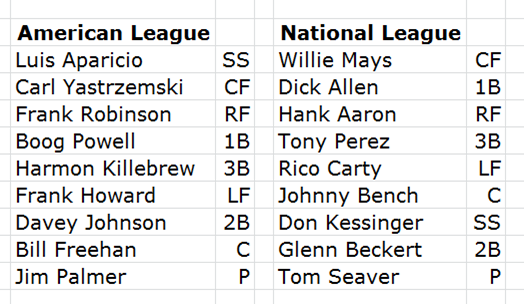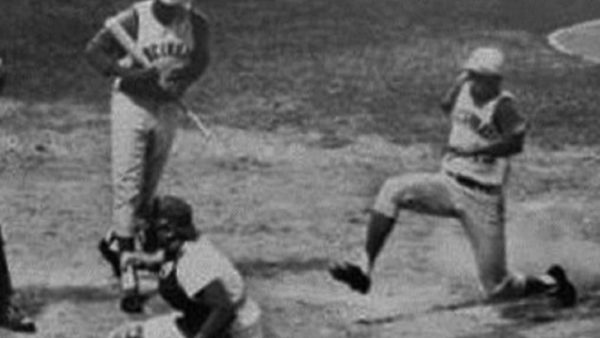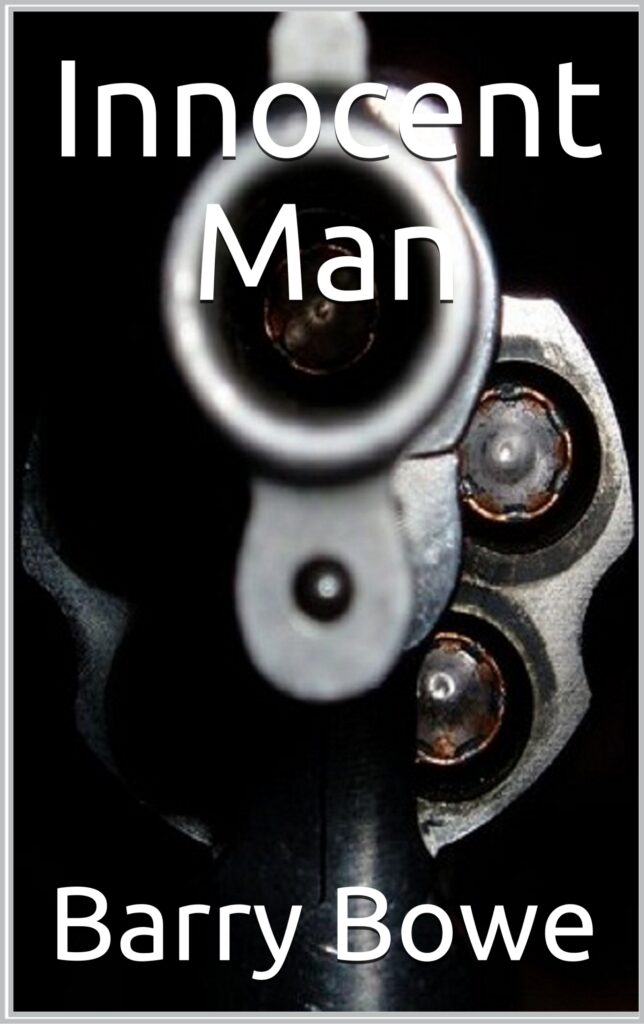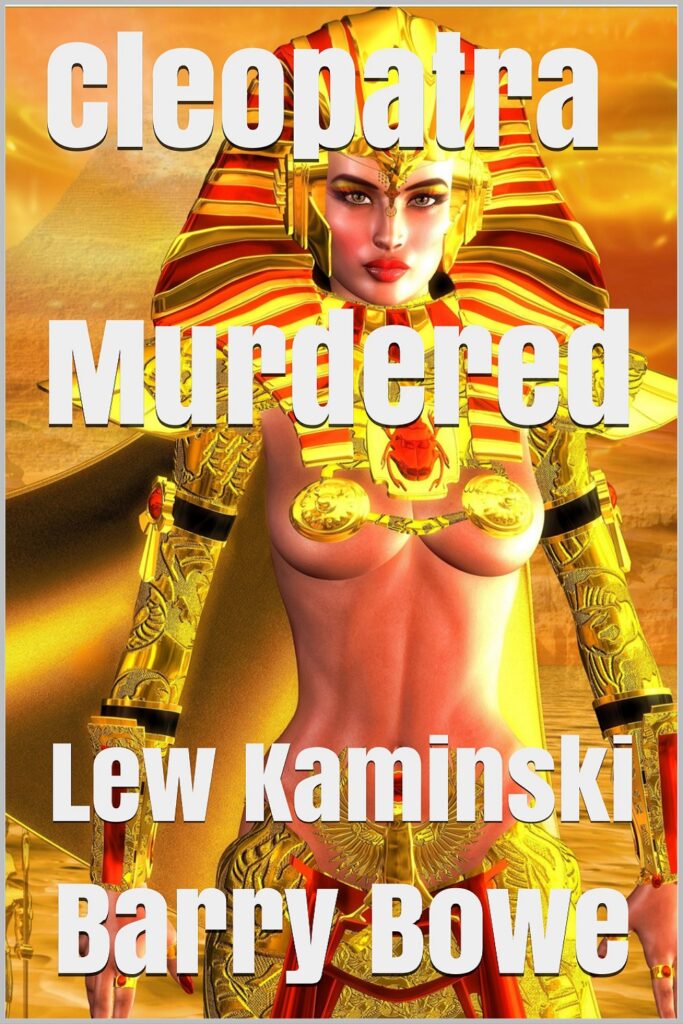Filling the Void
With no baseball games scheduled for today in the wake of yesterday’s All-Star Game, I decided to fill the void with this classic confrontation that ended the 1970 All-Star Game.
That game was played at brand-new Riverfront Stadium in Cincinnati in front of 51,838 fans. Baltimore Orioles manager Earl Weaver was in charge of the American League team and Mets manager Gil Hodges was calling the shots for the National Leaguers.

 With the AL was leading 4-1 going into the bottom of the ninth, the game appeared to be over. But then the NL rallied for three runs to tie the score 4-4 and the game went to extra innings.
With the AL was leading 4-1 going into the bottom of the ninth, the game appeared to be over. But then the NL rallied for three runs to tie the score 4-4 and the game went to extra innings.
The game progressed into the bottom of the twelfth.
After Joe Torre and Roberto Clemente both grounded out, Pete Rose followed with a two-out single and moved to second when Dodgers second-baseman Billy Grabarkewtiz followed with a single.
Re-Setting the Scene
- The game was tied 4-4 in the bottom of the 12th.
- With two outs, Pete Rose was on second and Billy Grabarkewtiz was on first.
- Mets center-fielder Jim Hickman was stepping to the plate.
- And the California Angels left-hander Clyde Wright (12-5 with 2.90 ERA) was on the mound.
Working from the stretch, Wright delivered a breaking ball and Hickman looped a single into centerfield. The runners took off and it became immediately apparent that Rose was going to try to score.
Kansas City A’s centerfielder Amos Otis fielded the ball and came up throwing.
 Ray Fosse, a second-year catcher from the Cleveland Indians, had replaced Bill Freehan behind the plate back in the fifth inning. Says Ray Fosse:
Ray Fosse, a second-year catcher from the Cleveland Indians, had replaced Bill Freehan behind the plate back in the fifth inning. Says Ray Fosse:
“I was waiting up the line for the throw from Amos Otis ─ I wasn’t there to block the plate. I was just there to accept the throw.”
But that’s not the way Pete Rose saw it.
Pete Rose played every play to the limit of his ability. The fact that it was “just” an All-Star Game didn’t matter to him. He didn’t see Ray Fosse. Instead, he saw a generic opponent standing between him and victory.
The throw from Amos Otis took one hop about ten feet from the plate and rebounded straight toward Ray Fosse’s awaiting mitt. But Pete Rose arrived a split-second before the ball arrived and plowed into Ray Fosse like a bull goring a toreador.
Fosse couldn’t hold the throw. That classic collision between Pete Rose and Ray Fosse ended the game with the National League on top 5-4.
The impact of the collision sent Fosse tumbling through three backward cartwheels on the ground. He wound up on his knees, five feet behind home plate, and holding his shoulder in obvious pain. Check out the video below for a replay.
Ray Fosse’s shoulder was separated.
Ray Fosse was batting .313 in 1970 prior to the All-Star Game. Although he played for six more years, he never came close to realizing the potential he showed prior to that collision and wound up with a .237 career batting average.
They don’t play All-Star games the way they used to.
Barry Bowe is the author of:
- Born to Be Wild
- 1964 – The Year the Phillies Blew the Pennant
- 12 Best Eagles QBs
- Soon-to-be-published Caribbean Queen







Comments
No Comments